As ephemeral as a cherry blossom, the haiku is a poem consisting of three lines — one consisting of five syllables, one with seven syllables, and then another with five again. Want to learn how to write haiku? You can use Plottr to help you capture these lyrical moments. Keep reading to learn how.
What is the Origin of the Haiku Form? Examples
The haiku dates back to the 13th century as the opening phrase of a longer, oral poem called a renga; it was ultimately accepted as a form of its own in the 16th century.
Poet Matsuo Basho, 1644-1694, is credited with establishing the standard format of the poem. This poem of his is considered a classic:
An old pond!
A frog jumps in –
The sound of water.
Or in another translation:
Breaking the silence
Of an ancient pond,
A frog jumped into water–
A deep resonance.
In Japanese, poets strictly follow the 3-line, 17-syllable format, while English speakers are advised to use fewer syllables due to the differences between the languages. Haiku are also often used in art and calligraphy in Japanese art, while they usually stand alone in English.
Japanese haiku often use words called kigo that specifically refer to the season referenced in the stanza. English-speaking poets are encouraged to use words that invoke a specific season.
Haiku written in English often play with the form and test its boundaries. For example, here is Richard Brautigan’s “Haiku Ambulance”:
A piece of green pepper
Fell
Off the wooden salad bowl:
So what?
This poem has four lines instead of three and the first line has six syllables instead of five. The last line has only two syllables, with the other syllables moved to other lines. The poem comments on the rules of haiku poetry while breaking them.
Who is the Haiku Template in Plottr For?
Poets wanting to try a disciplined form will enjoy writing a haiku. For example, Ezra Pound famously wrote a 30-line poem that, under the influence of studying haiku, he edited down to only two lines:
In a Station of the Metro
The apparition of these faces in the crowd;
Petals on a wet, black bough.
English-speaking poets can follow the traditional format or floutt it, as in the Brautigan example above, or fall somewhere in between. “Haiku [for you]” by Sonia Sanchez follow the tradition at first glance:
Love between us is
Speech and breath. Loving you is
A long river running.
Counting off the syllables shows that the final line is six rather than five. When a poem is this beautiful, though, an extra syllable hardly matters.
In translation, Japanese haiku don’t always follow the syllables strictly either. For example, Masaoka Shiki’s “I want to sleep”:
I want to sleep
Swat the flies
Softly, please
The translation captures the image of a sleeper needing silence in order to get their rest. The lines are a few syllables short in English, though in Japanese they may be exact.
Plot Points of the Haiku Template in Plottr
The haiku template in Plottr gives a simple, three-part structure to practice this lovely form:
- Beginning: This is the first card of the Haiku template, for your poem’s first line and first five syllables. For a haiku, this line will set the scene, introduce the main subject, or establish the poem’s atmosphere.
- Middle: The second card is for the second line of the poem and should be around seven syllables. This line provides more detail or context to the first line.
- End: The third card is for the third line of the poem, which is the second set of five syllables. This line would be the twist of the poem, provide a resolution to the poem’s question, or otherwise offer a sense of closure
Additional cards for the haiku template are the Instructions card, which provides a belief background of the haiku and instructions on how to write it; the Poem Title card, where you can write your poem’s title; and the Message card, where you can record the message or theme of the poem, and, ultimately, your thoughts on whether the poem succeeded or failed in conveying that theme.
How Do You Use the Haiku Template in Plottr?
First, download and install the Plottr app. Start with a free trial of Plottr (you can see Plottr pricing here).
Within the Haiku template, you will see the cards as described above. You can view the cards horizontally or flip the template to view it vertically. (Viewing it vertically may even help in composing a haiku, as it echoes the traditional Japanese format.) Follow these steps to get started:
- Step 1: In the Files tab of the Plottr dashboard, click Create From Template
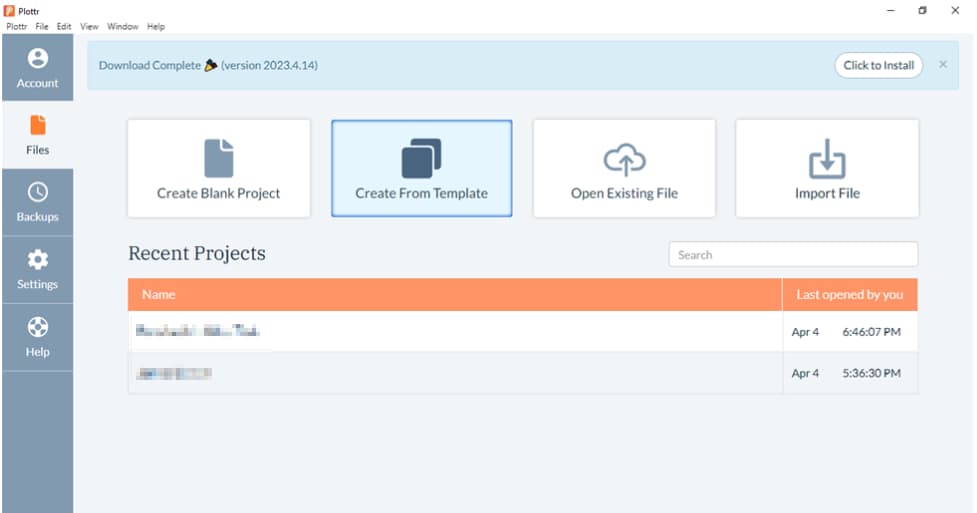
- Step 2: From the list of templates that appears, select Haiku, then click Create New Project
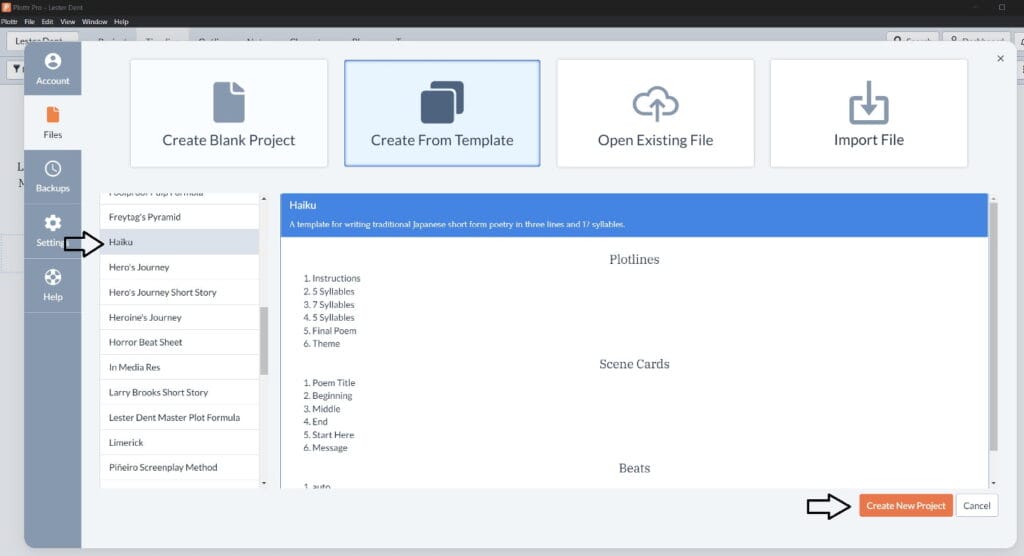
- Step 3: Give your haiku project a name so you can find your Plottr file easily. The template will open in timeline view
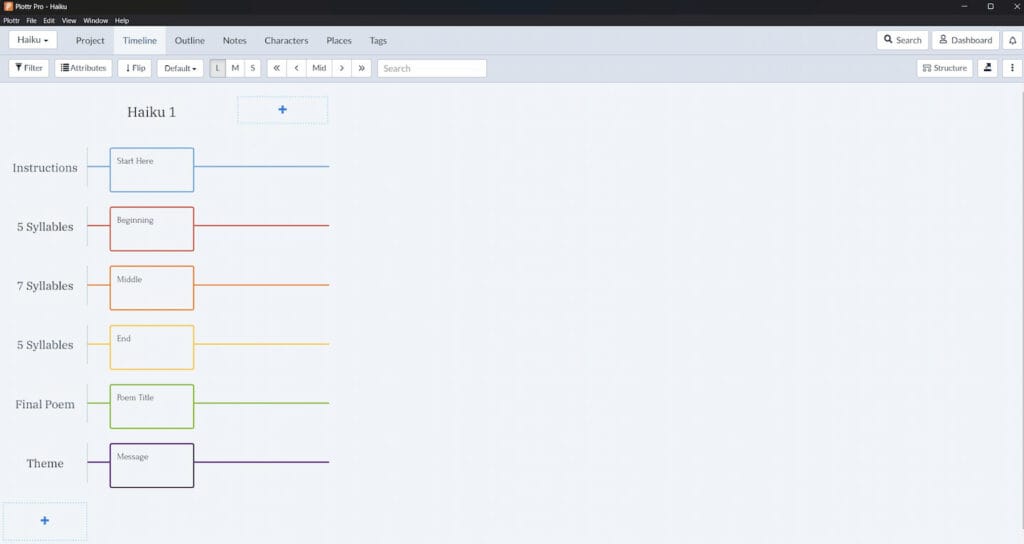
- Step 4: Click any of the scene cards to start working on your haiku. Each card gives examples of Haiku beginnings, middles and endings so you’re never lost
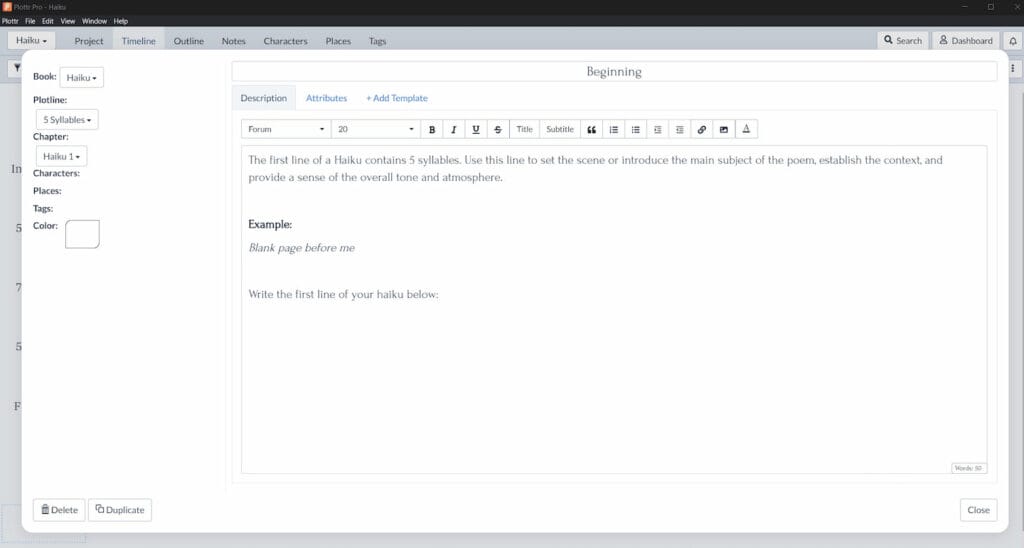
And there you have it, how to write haiku in Plottr! If you’d like to try your hand at other short forms, from the humorous to serious, here are other templates to explore:
Start Counting Syllables
Ready to start creating snapshots of the seasons in verse? To try out the Haiku template, download Plottr and start a free trial. Do you read haiku or write them? Share your favorites in the comments!
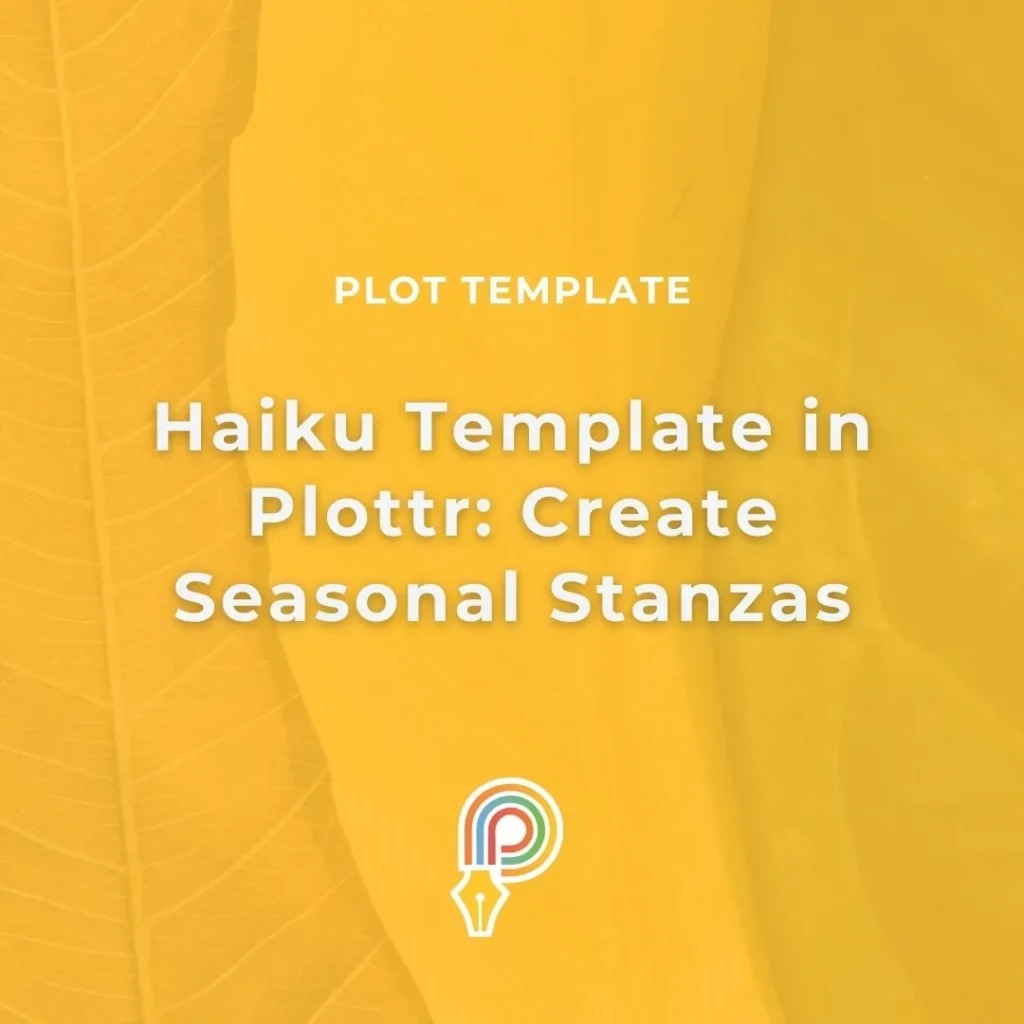


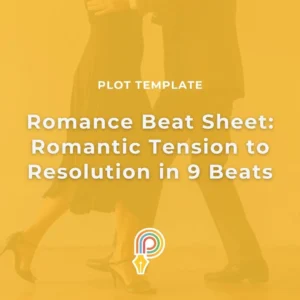
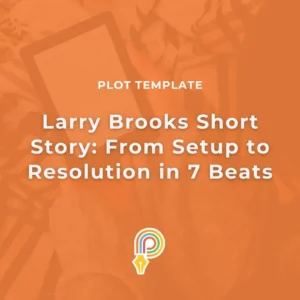

Comments